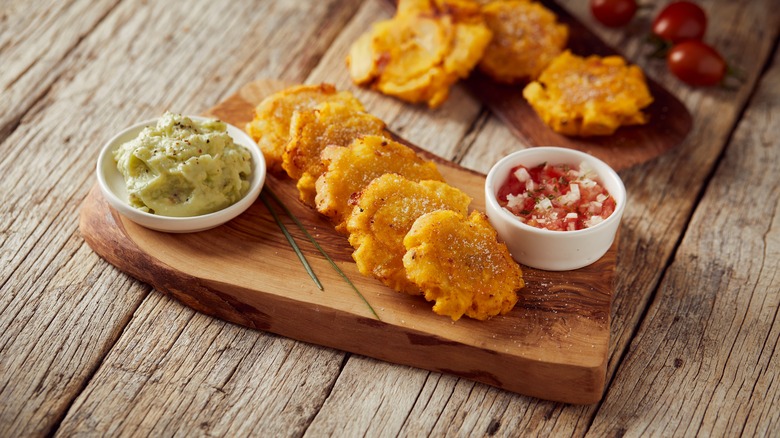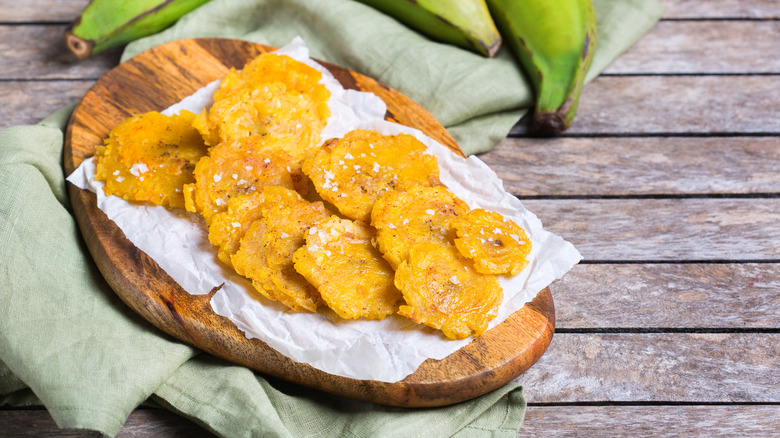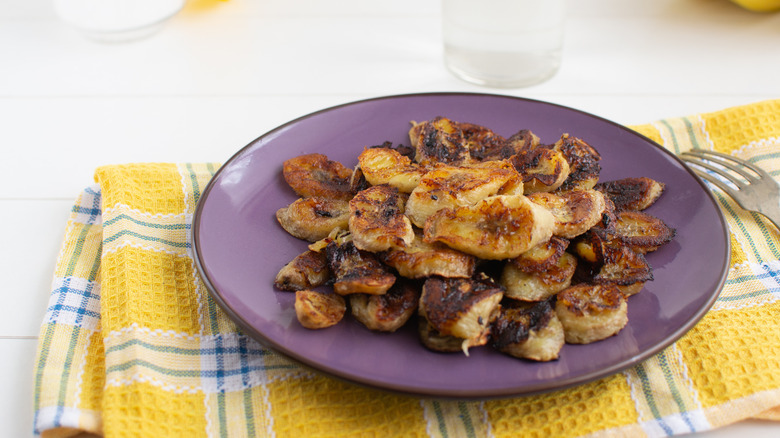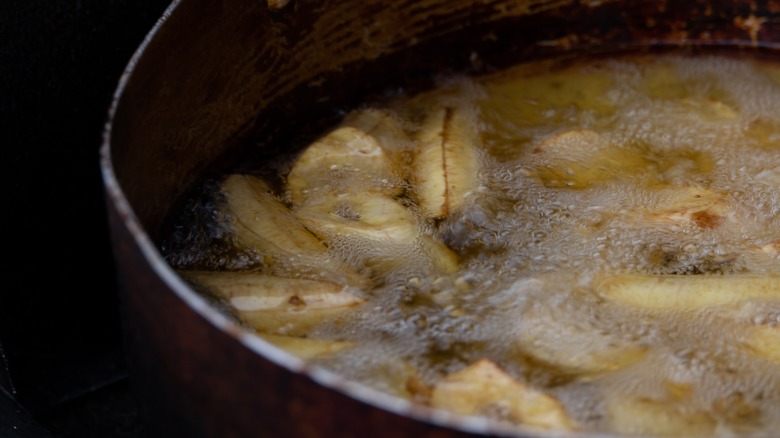What Makes Tostones Unique?
Plantains are a versatile fruit that can be prepared in many great ways. From boiling to mashing to baking, starchy plantains make a filling addition to almost any meal but can also stand strong on their own. They are also an ideal staple kitchen ingredient since their neutral flavor makes them ideal for enjoying in both savory and sweet recipes. But, if you're simply in search of a quick snack or looking for an effortless appetizer, frying plantains is an easy win. There are several different ways to fry up plantains, but the unique crispy twice-fried tostones may be the most rewarding.
Tostones are an uncomplicated and crunchy fried plantain dish made from slices of unripe green plantains. This golden brown treat is often enjoyed as a snack throughout many regions of the world, particularly in Caribbean and South American countries. Between these nations, serving styles vary, but each is worth seeking out or attempting.
Variations of tostones
Many cuisines around the world enjoy their own version of tostones, which means the dish often goes by different names and has unique food pairings from country to country. The exact origins of the dish are unknown, but many believe that the dish originated in Latin America, while others feel it comes from the Caribbean. Regardless, today the dish is very popular in both areas, and plenty of the countries in these regions enjoy serving up tostones frequently.
In Haiti, the dish is called Bannann Peze, and the plantains are eaten as a snack and usually paired with other fried meats. Fried chicken, goat, or pork are all commonly enjoyed alongside the fried fruit. The dish is eaten similarly in Caribbean nations — in Puerto Rico, plantains are often accompanied by rice and beans, in the Dominican Republic it's served alongside meat, and in Cuba, tostones are dunked in their version of mojo sauce.
In Latin American countries, tostones are also popular. MasterClass notes that in Venezuela and Colombia the dish is known as patacones. Here, rather than eaten as a snack, it is common to eat them for breakfast; pair them with scrambled eggs and cheese for a true South American experience.
Tostones are not maduros
Since tostones and other popular plantain dishes are widely enjoyed across multiple regions and countries, it is common for tostones to get mixed up with another well-known plantain dish, maduros. Maduros are another widespread fried plantain dish that is similar in appearance to tostones. However, there are crucial differences between the two.
While tostones are strictly made from unripe green plantains, maduros are made from ripe black ones. By the time ripening plantains are ready to be peeled and chopped for making maduros, the once yellow fruit would have turned nearly completely black. The ripeness ensures that the maduros have their signature sweet flavor.
Another major difference occurs in the cooking process. Usually, maduros are only fried once, while tostones get fried twice for extra crispiness. Maduros also often have a bit of char on them after being fried, and they are much thicker than tostones.
However, these two dishes can be eaten similarly, as maduros are commonly eaten as a snack or alongside a breakfast meal.
How tostones are made and eaten
There are a myriad of fried plantain recipes out there that are popular worldwide. However, this dish is particularly unique for its twice-fried element, which ensures extra crispiness.
The first step to making tostones is to source unripe green plantains and peel them. This can be tricky, but practice will ensure you get faster each time you make this dish. Once peeled, the fruit can be sliced into bite-sized pieces. When they're finally cut, they can be tossed into hot oil until they have a pleasing golden color.
After their first fry, the pieces are removed and placed onto a paper towel that absorbs the oil. Each plantain is then smashed down with an even surface. Wax paper is often placed between the object and plantain to make sure nothing sticks. After they're smashed down, they get thrown into the oil for a second round.
After they're adequately crispy, they're removed and sprinkled with salt. The tostones should be served warm, and they can be paired with your dip of choice. Guacamole or salsa are great options for a traditional flair. Feel free to customize your tostones how you prefer, and let your snacktime be changed forever.



